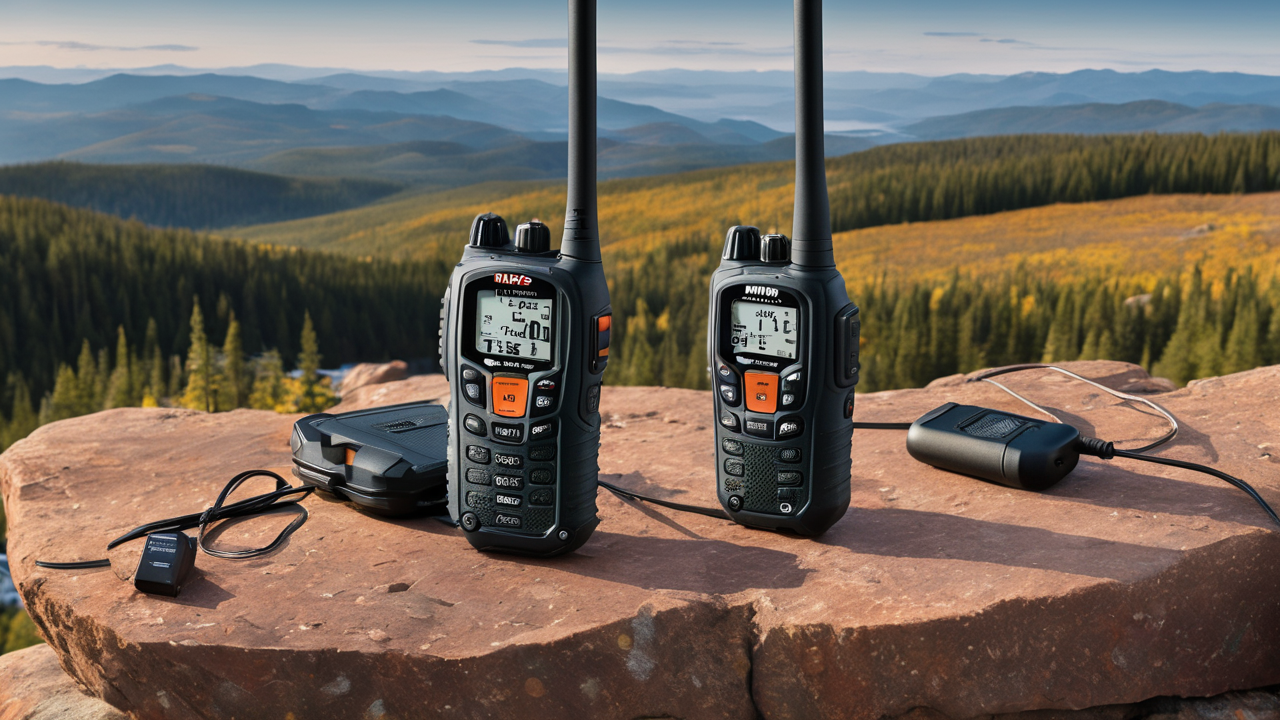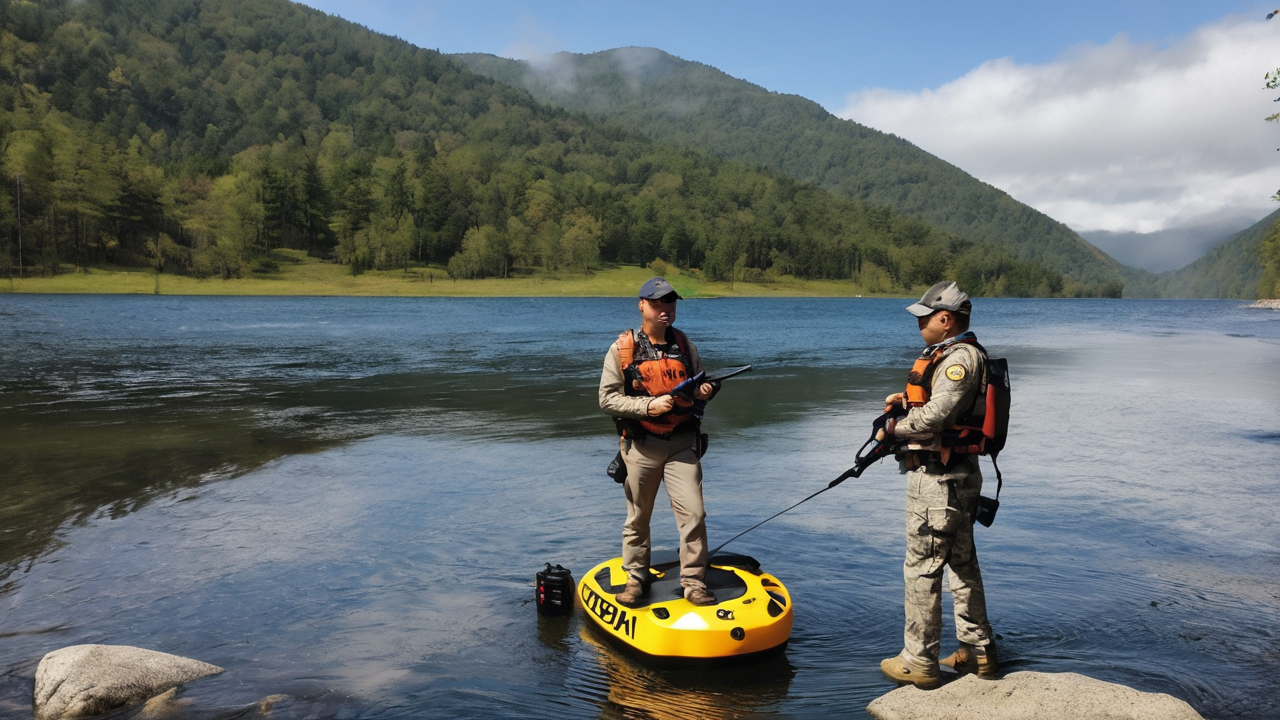Understanding the Basics of Long-Range Walkie Talkies
Key Features to Look for in 100-Mile Walkie Talkies
When shopping for long-range walkie talkies, there are several key features to consider. First, look for devices with high wattage. Higher wattage means more power and better range. Also, check for multiple channels and privacy codes. These allow for clearer communication and less interference.

Battery life is crucial for extended outdoor use. Opt for models with long-lasting batteries or rechargeable options. Durability is another important factor. Choose walkie talkies that are waterproof and shock-resistant. This ensures they can withstand harsh outdoor conditions.
Lastly, consider additional features like GPS, weather alerts, and hands-free operation. These can enhance your outdoor experience and safety. Remember, the right features depend on your specific needs and intended use.
Technologies Behind Long-Range Communication
Long-range walkie talkies use various technologies to achieve their impressive range. The most common is Ultra High Frequency (UHF) radio waves. These waves can penetrate buildings and vegetation, making them ideal for outdoor use.
Another technology is Frequency Modulation (FM). FM provides clearer audio quality over long distances. Some advanced models use digital signal processing. This technology reduces background noise and improves voice clarity.
Many long-range walkie talkies also incorporate GMRS (General Mobile Radio Service) technology. GMRS allows for higher power output and longer range compared to standard FRS (Family Radio Service) devices.
Repeater capability is another key technology. Repeaters can significantly extend the range of walkie talkies. They receive signals and retransmit them at a higher power, allowing communication over greater distances.
Regulations and Legal Considerations in the US
In the United States, the use of long-range walkie talkies is regulated by the Federal Communications Commission (FCC). It's important to understand these regulations to ensure legal operation of your device.
Most 100-mile walkie talkies use GMRS frequencies. To operate on GMRS frequencies, you need an FCC license. This license is easy to obtain and covers your entire family. It's valid for 10 years.
The FCC also limits the maximum power output for handheld devices. For GMRS radios, this limit is 5 watts. Be aware that some manufacturers may advertise ranges that exceed legal power limits.
It's also important to note that actual range can vary greatly depending on terrain and conditions. The "100-mile" range often advertised is typically achievable only in ideal conditions.
The Best 100-Mile Walkie Talkies on the Market
Reviewing Top-Rated 100-Mile Walkie Talkies
When it comes to top-rated 100-mile walkie talkies, several models stand out. The Midland GXT1000VP4 is a popular choice. It offers 50 channels, 142 privacy codes, and a range of up to 36 miles. It's also waterproof and has a vibrate alert feature.

Another highly rated option is the Motorola T470. It boasts a range of up to 35 miles and has 22 channels. It's also waterproof and includes weather alerts. The T470 is known for its clear audio quality and durable build.
For those seeking advanced features, the BaoFeng UV-5R is worth considering. It offers both UHF and VHF bands, 128 channels, and a range of up to 50 miles. However, it requires more technical knowledge to operate.
Remember, actual range can vary greatly depending on terrain and conditions. Always test your walkie talkies in the environment you plan to use them in.
Comparing Price, Range, and Features
When comparing long-range walkie talkies, consider the balance between price, range, and features. Generally, higher-priced models offer better range and more features. However, this isn't always the case.
For example, the Midland GXT1000VP4 offers a good balance. It's moderately priced with a solid range and useful features. The Motorola T470 is slightly more expensive but offers weather alerts and better water resistance.
On the budget end, the Cobra ACXT1035R FLT offers a claimed 37-mile range at a lower price point. However, it may lack some advanced features of pricier models.
Remember, advertised range is often based on ideal conditions. In real-world use, range may be significantly less. Consider your specific needs and budget when making a decision.
Recommendations for Specific User Needs
Different users have different needs when it comes to long-range walkie talkies. For hikers and campers, the Midland GXT1000VP4 is a great all-around choice. Its waterproof design and long battery life make it ideal for outdoor adventures.
For those who need weather updates, the Motorola T470 is an excellent option. Its built-in weather alert feature can be crucial for outdoor safety. It's also a good choice for water activities due to its high water resistance rating.
For users who need maximum range and don't mind a learning curve, the BaoFeng UV-5R is worth considering. Its dual-band capability and programmable features offer flexibility for advanced users.
For family use or beginners, the Cobra ACXT1035R FLT is a good starter option. It's easy to use and offers decent range at an affordable price point.
Advanced Strategies for Maximizing Your Walkie Talkie's Effectiveness
Optimal Use of 100-Mile Walkie Talkies in Various Outdoor Environments
To get the most out of your long-range walkie talkies, consider the environment you're in. In open areas with few obstacles, you'll achieve the best range. Hills, buildings, and dense forests can significantly reduce range.

When in mountainous areas, try to communicate from high points. This can greatly extend your range. In forests, move to clearings or higher ground if possible. Water can also affect signal, so be aware of this near lakes or oceans.
Use the highest power setting when you need maximum range. However, be mindful of battery life. Lower power settings can extend battery life when full range isn't needed.
Make use of privacy codes to reduce interference from other users. This is especially important in popular outdoor areas where others may be using similar devices.
Troubleshooting Common Issues with Long-Range Walkie Talkies
Even the best walkie talkies can encounter issues. One common problem is poor reception. This can often be solved by moving to a higher location or away from obstacles. If you're in a building, try moving near a window.
Battery issues are another frequent problem. Always carry spare batteries or a portable charger. If your device uses rechargeable batteries, make sure they're fully charged before each trip.
Sometimes, walkie talkies may pick up interference from other electronic devices. Try moving away from these devices or changing channels. If you hear a constant static, check your antenna. A damaged antenna can significantly reduce range and clarity.
If your walkie talkie gets wet, remove the batteries immediately and let it dry completely before use. For persistent issues, consult your device's manual or contact the manufacturer's support team.
Staying Updated with Technological Advancements in Two-Way Radio Communication
The world of two-way radio communication is constantly evolving. Staying updated with new technologies can help you make the most of your devices. One recent advancement is digital signal processing. This technology improves audio quality and range.
Another trend is the integration of GPS technology in walkie talkies. This can be invaluable for navigation and safety in remote areas. Some newer models even offer Bluetooth connectivity, allowing for hands-free operation.
Keep an eye on developments in battery technology. Improved batteries can offer longer life and faster charging times. Solar-powered options are also becoming more common for outdoor use.
Lastly, stay informed about changes in FCC regulations. These can affect the frequencies and power levels allowed for consumer use. Joining online forums or subscribing to industry newsletters can help you stay up-to-date with the latest advancements and regulations.


